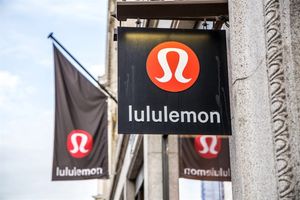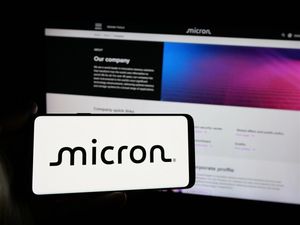Cairn Surgical, Inc., an innovative medical technology firm striving to make breast cancer surgery more precise, announced today that a multicenter study just published in the November issue of the Annals of Surgical Oncology demonstrated that the company’s Breast Cancer Locator (BCL) System met its primary endpoint, enabling breast surgeons to successfully remove the entire tumor with negative margins in 94% of patients. Negative margins indicate there is no evidence of cancer in the margins of the excised tissue.
The BCL System is designed to improve the accuracy of breast conserving surgery (lumpectomy) by providing precise guidance regarding tumor shape, size, and location. The detailed information – which traditional wire localization or other methods using seeds do not provide – is intended to enable surgeons to achieve clear margins and improve cosmetic outcomes by minimizing the amount of normal breast tissue removed.
“The goals of breast conserving surgery are to resect the cancer with negative margins and with an optimal cosmetic result. In this study, the BCL System enabled surgeons to perform precise breast conserving surgery, with margin-negative resections obtained in the vast majority of cases. They also achieved relatively low resected specimen volumes with high patient satisfaction,” said Prof. Dr. med. Marc Thill, Chief of Gynecology and Gynecologic Cancer at Agaplesion Markus Krankenhaus, Frankfurt, Germany, and clinical investigator in the study. “Investigators also universally found the system easy to use. They particularly appreciated the Visualizer tool, which allows us to interactively view the tumor in 3D and in the supine position, prior to and during surgery.”
The multicenter European post-market surveillance clinical study published in Annals evaluated the ability of the BCL System to achieve negative margins. The study enrolled 33 patients undergoing breast conserving surgery to remove non-palpable breast cancer at five centers by nine surgeons in Germany, Switzerland and Italy. While most patients had infiltrating ductal cancers, 21% had infiltrating lobular cancers and 9% had ductal carcinoma in situ. Study outcomes showed that 31 of the 33 patients had margin-negative resections; positive margins were seen in one patient with invasive lobular cancer and one patient with DCIS.
The study also demonstrated:
- No additional shave margins at the time of the initial surgery were needed to obtain negative margins in any of the 31 margin-negative cases
- The mean volume of the lumpectomy specimens (54 ml) was low compared to that achieved in other studies1
- Patient satisfaction with the cosmetic appearance of their breast was maintained following surgery
- No serious adverse events were observed; safety outcomes were comparable to typical breast conserving surgery
- 91% of surgeons were satisfied with the BCL component of the system
- 100% of surgeons were satisfied with the Visualizer component of the system
The two components of the BCL System are created from a supine MRI of the patient’s breast, obtained with the patient lying on her back, in the same position as for surgery. A customized 3D-printed form – the BCL – is produced that fits the unique shape of that patient’s breast and allows the surgeon to identify the tumor edges and a pre-specified clear margin. An interactive image of the tumor in the breast is also produced – the Visualizer – providing a detailed, 3D view of the tumor within the breast. During surgery, the two technologies are used concurrently by a surgeon with the intent to precisely excise the cancer.
“It is clear that this novel approach, which provides the surgeon with far greater detail about a patient’s breast tumor, has the potential to dramatically improve the outcomes of breast conserving surgery,” said Richard Barth, Jr., MD, Dartmouth-Hitchcock Medical Center, Professor of Surgery, Geisel School of Medicine at Dartmouth, and Co-founder of Cairn Surgical. “The 6% positive margin rate demonstrated in this study is a 70% improvement compared to the 20% positive margin rate historically reported with wire localization in patients with non-palpable tumors.”
A randomized prospective pivotal trial of 448 women treated with the Breast Cancer Locator (BCL) System at up to 25 centers is currently enrolling patients and is designed to support FDA clearance and U.S. commercialization. The primary endpoint is positive margin rate, with other endpoints including specimen volumes, rate of additional shave biopsies, re-excision rate, cancer localization rate, operative time, and cost of care.
About Cairn Surgical
Cairn Surgical, Inc. is developing patient-specific guides using patient imaging data and state-of-the-art 3D printing technologies. The Breast Cancer Locator (BCL) System is commercially available in Europe and is being studied in a U.S. pivotal trial.
The Breast Cancer Locator is considered an investigational device in the U.S. and is limited by U.S. law to investigational use only.
References:
- Chagpar AB, Killelea BK, Tsangaris TN, et al. A randomized, controlled trial of cavity shave margins in breast cancer. N Engl J Med. 2015; 373(6): 503-510.
View source version on businesswire.com: https://www.businesswire.com/news/home/20251021028043/en/
In this study, the BCL System enabled surgeons to perform precise breast conserving surgery, with margin-negative resections obtained in the vast majority of cases.
Contacts
MEDIA CONTACT:
Michelle McAdam, Chronic Communications, Inc.
michelle@chronic-comm.com, (310) 902-1274






